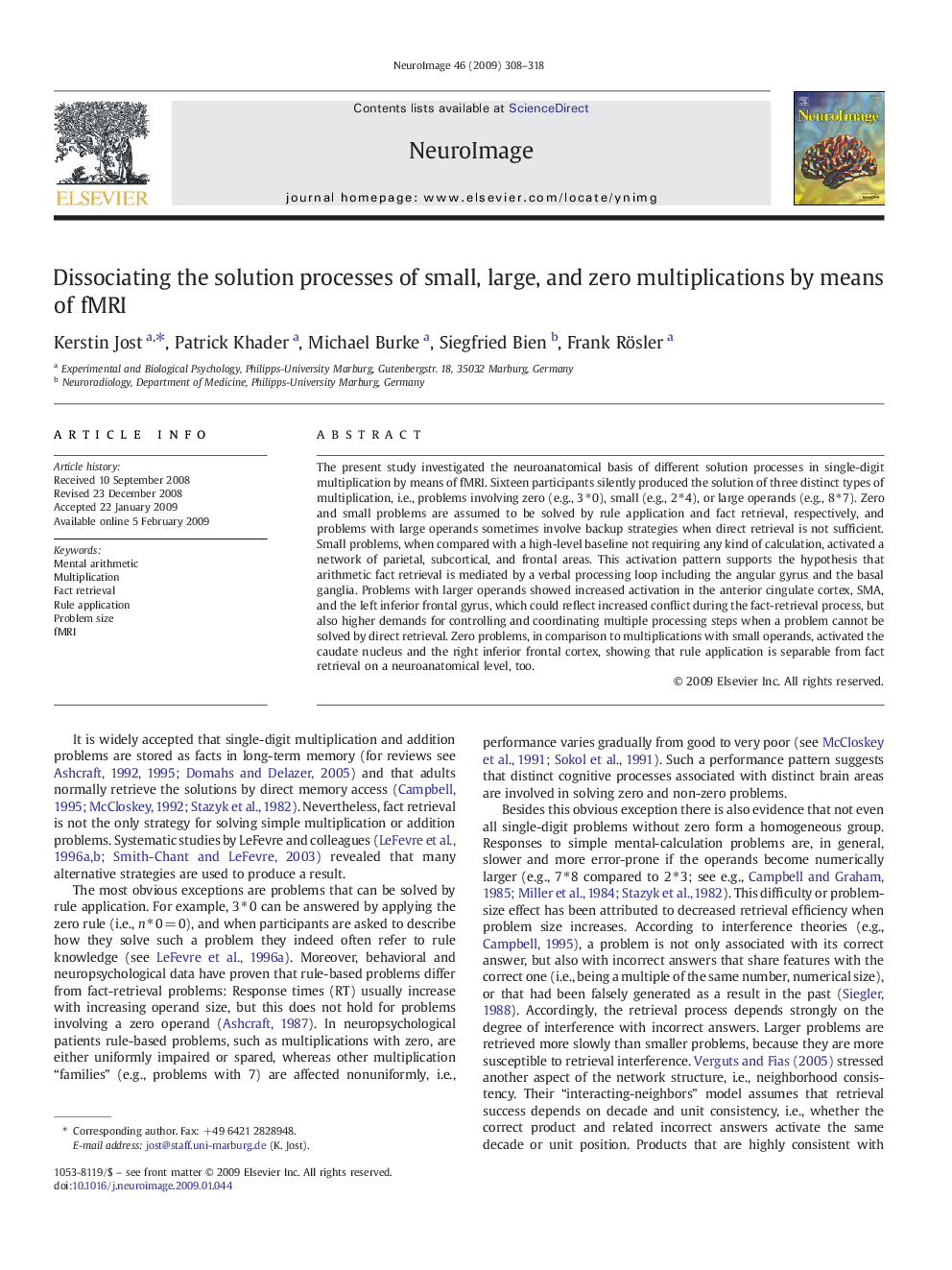| Article ID | Journal | Published Year | Pages | File Type |
|---|---|---|---|---|
| 3072744 | NeuroImage | 2009 | 11 Pages |
The present study investigated the neuroanatomical basis of different solution processes in single-digit multiplication by means of fMRI. Sixteen participants silently produced the solution of three distinct types of multiplication, i.e., problems involving zero (e.g., 3 ⁎ 0), small (e.g., 2 ⁎ 4), or large operands (e.g., 8 ⁎ 7). Zero and small problems are assumed to be solved by rule application and fact retrieval, respectively, and problems with large operands sometimes involve backup strategies when direct retrieval is not sufficient. Small problems, when compared with a high-level baseline not requiring any kind of calculation, activated a network of parietal, subcortical, and frontal areas. This activation pattern supports the hypothesis that arithmetic fact retrieval is mediated by a verbal processing loop including the angular gyrus and the basal ganglia. Problems with larger operands showed increased activation in the anterior cingulate cortex, SMA, and the left inferior frontal gyrus, which could reflect increased conflict during the fact-retrieval process, but also higher demands for controlling and coordinating multiple processing steps when a problem cannot be solved by direct retrieval. Zero problems, in comparison to multiplications with small operands, activated the caudate nucleus and the right inferior frontal cortex, showing that rule application is separable from fact retrieval on a neuroanatomical level, too.
